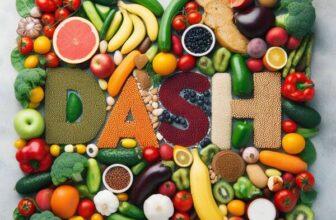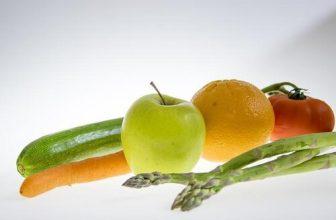How Do You Read A Nutrition Label For High Blood Pressure?
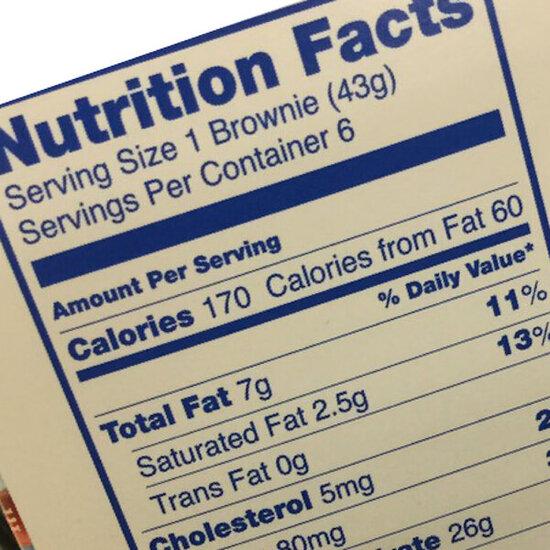
(Note: Some of the links in this post are affiliate links, and we will be compensated when you make a purchase by clicking through our links at no additional cost to you.)
Checking the Nutrition Facts on the food label is one way to choose foods that are lower in fat, cholesterol, sodium, or sugar. In the United States fats and sugar will be given in grams (g). Sodium and cholesterol will be in milligrams (mg).
Reading Food Labels
Most food products have nutrition facts on their labels. You can use these facts to help you make healthier eating choices. Some labels list the daily values for a diet of 2,000 and 2,500 calories. Your own calorie needs may be more or less than this.
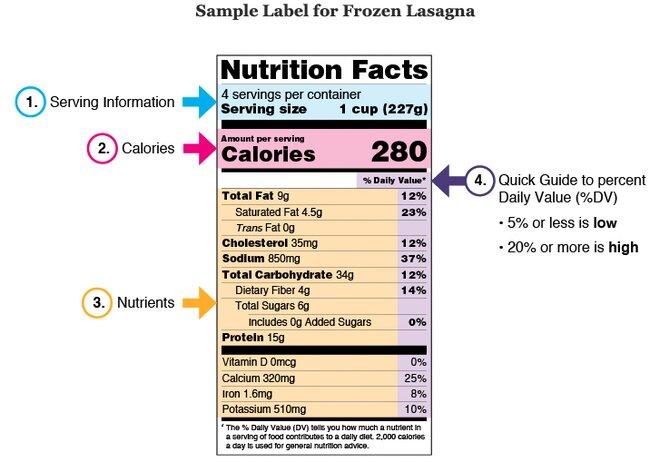
Image credit: fda.gov
1) Serving Information:
The serving information at the top should be read first. This is where you will learn the size of a single serving and the total number of servings per package or container. All other figures on the label are calculated based on serving sizes. Please note that the serving information is not a recommendation of how much you should eat or drink. Compare the serving sizes on the labels and in your food plan if you are following a particular diet to lower your blood pressure. Sometimes they might vary.
>>> Discover The Top DASH Diet Cookbooks To Help Lower Your Blood Pressure
2) Calories:
Calories tell you the amount of energy you get from a serving of this food. Be mindful of the calories per serving and the amount of calories you would actually consume if you consumed the entire package. You consume twice as many calories and nutrients when you double your serving size.
3) Nutrients:
The nutrients section lists several important nutrients that have an effect on your health. You can utilize it to support your individual dietary goals. Look for foods that include more of the nutrients you want to obtain more of and less of the nutrients you might want to limit. Check key nutrients and understand what you are searching for. Total sugars can comprise both natural and added sugars, and not all fats are bad. Avoid trans fats and consume as little added sugar, saturated fat, and sodium as possible. Compare labels when selecting between different brands or similar items, and, if at all possible, choose foods containing fewer of these nutrients. Ensure that you get an adequate amount of the nutrients your body need, including calcium, choline, dietary fiber, iron, magnesium, potassium, and vitamins A, C, D, and E.
4) The Percent Daily Value (%DV):
Based on the daily recommended 2,000 calories, the percent Daily Value (%DV) shows how much of the different nutrients or the percentage of each nutrient are in a serving. Choose foods with a lower % DV (5 percent of less) if you want to ingest less of a certain nutrient such as saturated fat or sugar. Choose foods with a higher % DV (20 percent or more) if you want to consume more of a nutrient such as fiber.
- Example from the sample food label:
- 2,300mg = total sodium for one day
- 850mg = sodium in 1 serving of this food (or 37% of the total sodium you can eat in one day)
Other Food Label Terms
Here are sodium-related phrases you may see on food labels:
- Sodium/salt free – 5 mg of sodium or less in a serving
- Very low sodium – 35 mg or less in a serving
- Low Sodium – 140 mg or less in a serving
- Low sodium meal – 140 mg or less of sodium per 3 1/2 oz (100 g)
- Reduced sodium – 1 serving has no more than 75% of sodium in the regular product (this can still be high in sodium)
- Light in Sodium or Lightly salted – 50% less sodium than the regular than the regular version
- No salt added, unsalted, without added salt – no salt added during processing. This is only used for foods that usually have salt added and these products may not be salt/sodium-free unless stated. These can still be high in sodium.
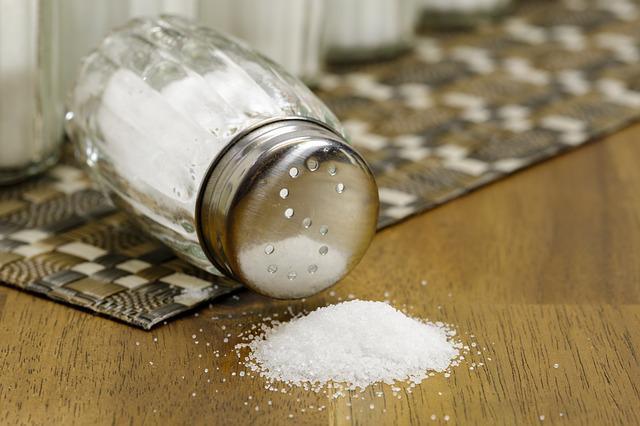
Here are sugar-related phrases you may see on food labels:
- Total sugars – include both the naturally occurring sugars in many nutritious foods and beverages-like the sugar in milk and fruits-and any added sugars that may be included in the product. Since no suggested daily intake for total sugars has been established, there is no Daily Value for them.
- Added sugars – include sugars that are sold as sweeteners (like table sugar), sugars that are added to foods during processing (like sucrose or dextrose), sugars from syrups and honey, and sugars from concentrated fruit or vegetable juices. Natural sugars that are present in milk, fruits, and vegetables are not included. The Daily Value for added sugars, based on a 2,000 calorie diet, is 50 grams per day. The main sources of added sugars for the majority of Americans are baked products, desserts, and sweets.
Some other helpful terms for you to know:
- Low-fat – 3 g of fat or less/serving
- Low-saturated fat – 1 g saturated fat or less/serving
- Low-cholesterol – less than 20 mg/serving
- Low-calorie – 40 calories or less/serving





